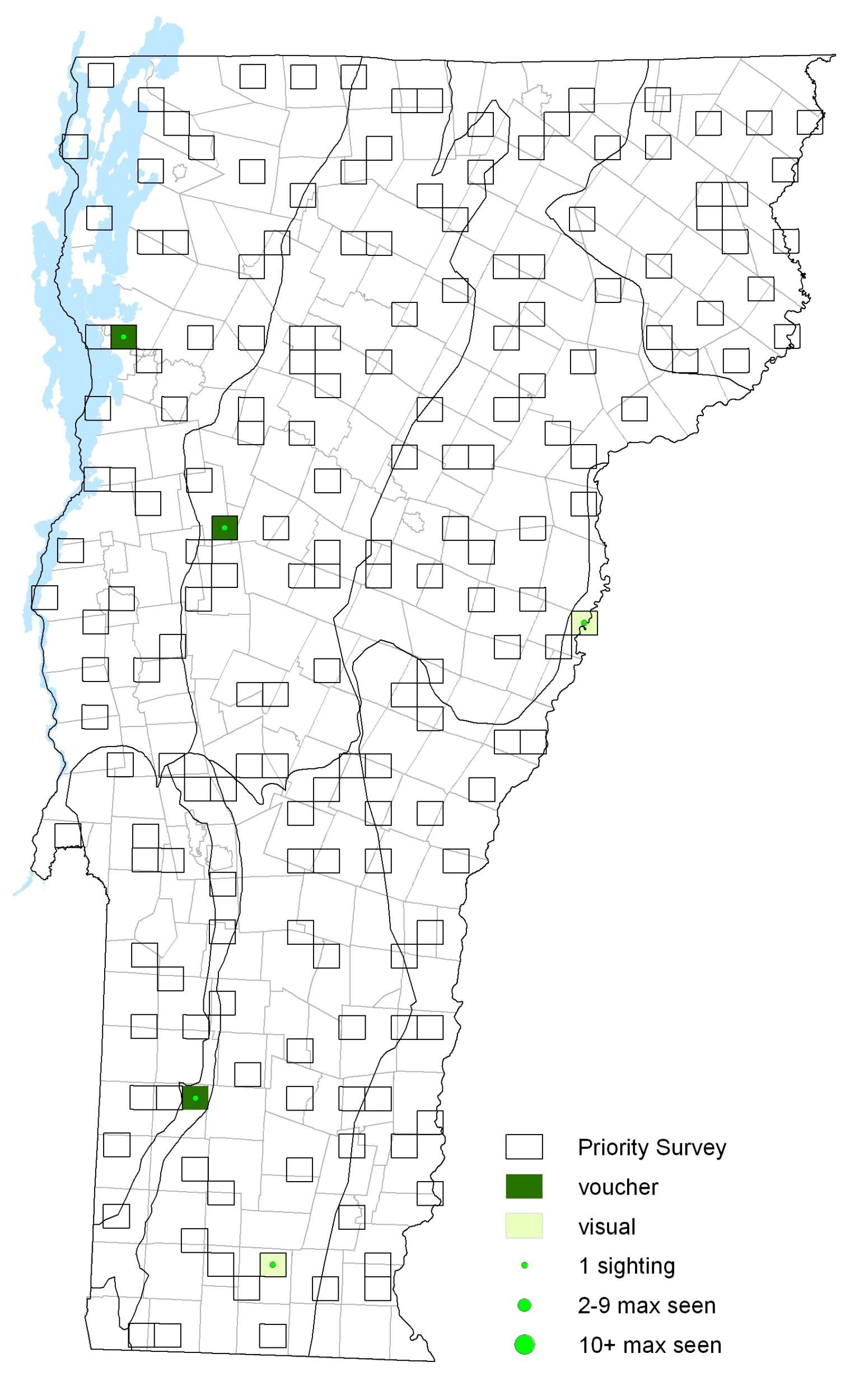|
Vagrant Conservation Status North American Range |
Mass irruptions of this butterfly from the Southwest have been known to halt traffic, darken the sky and cause street lights to turn on. It is this behavior that has led a few vagrants into Vermont. Most authorities recognize just one species, but a few wish to elevate some forms to species status. The East Coast race is bachmanii. When perched on a branch they mimic a dead leaf with the “snout” appearing to be the petiole.
Identification
Labial palps long and extended forward as a “snout”. Tip of forewing squared off. Upperside brown, forewing with orange at base and inner margin, and white spots on outer half. Underside of hindwing mottled or smooth violet-gray.
Flight
Two broods in the south from May to August. A vagrant to Vermont, there were no known records prior to VBS. There were four recorded in western Vermont and one in the Upper Connecticut River valley. The first state record was from 30 July 2002 in Burlington (C. Gifford). Other VBS records: 10 August 2002 Manchester (S. Griggs), 9 August 2003 Bradford (N. Osborne), 20 June 2007 Wilmington (G. Look), 17 July 2007 Starksboro (B. Collins). There have been several records since VBS.
Distribution and Habitat
As expected of a vagrant, scattered records from across the state. Larval host plants are several species of Hackberry (Celtis) and adults nectar from a variety of flowers including Dogbane (Apocynum), Goldenrod (Oligoneuron), Aster (Symphyotrichum), and others. Observed nectaring milkweed (Asclepias) during VBS. 






